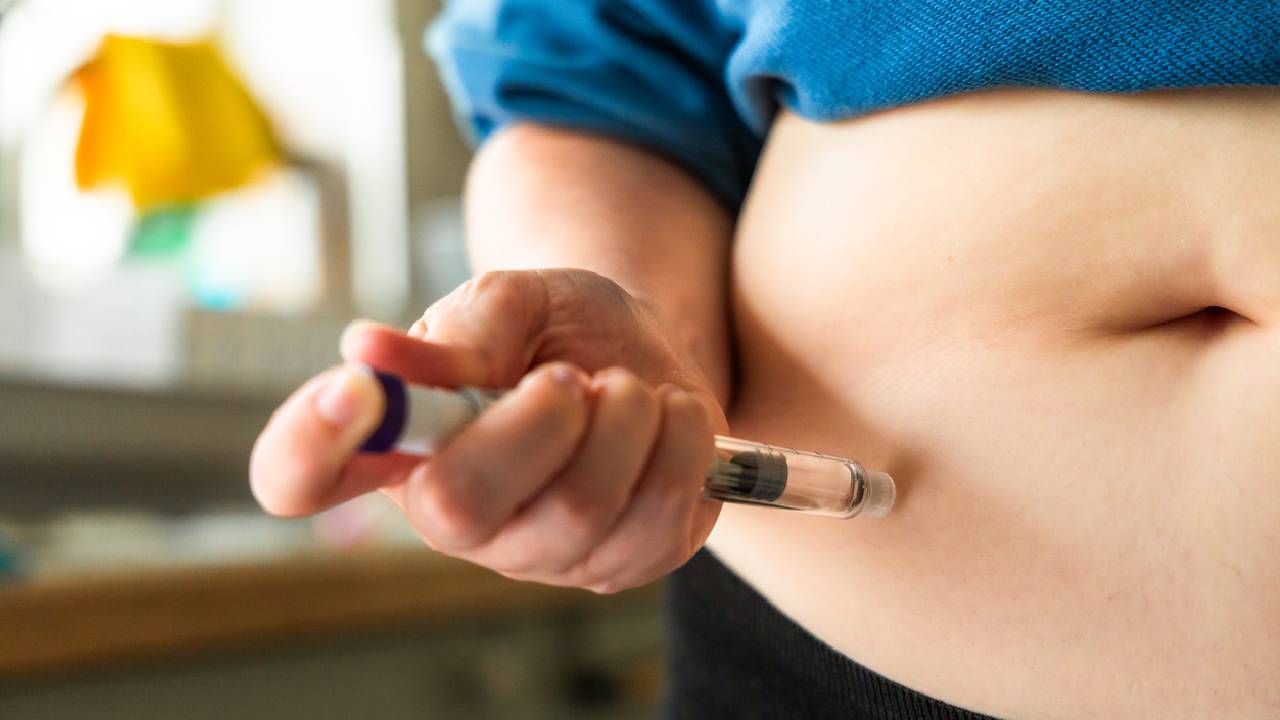In Clinical
Follow this topic
Bookmark
Record learning outcomes
About 1.5 million people in the UK used anti-obesity medicines in March 2025, according to IQVIA intelligence. Typically, users shed weight. But when people stop taking the drugs, the pounds pile on, two new studies suggest (writes Mark Greener).
Firstly, a meta-analysis of 11 studies involving 2,466 patients published in BMC Medicine looked at weight regain after stopping a variety of anti-obesity medicines. It included six GLP-1RA studies, one assessing dual GLP and gastric inhibitory polypeptide (GIP) receptor agonists, and one evaluating orlistat.
Eight weeks after stopping the medicines, patients had gained an average of 1.5kg. After 12 weeks, the average weight gain was 1.76kg; at 20 weeks it was 2.50kg; at 26 weeks, average weight gain was 2.30kg; and at 52 weeks, it was 2.47kg.
Overall, however, patients had lost weight 52 weeks after stopping the medicines compared with the baseline. Further studies are needed to assess weight regain for different baseline body mass indices, assess the relationship between the rates of weight loss and regain, and elucidate the mechanisms that drive weight gain after stopping anti-obesity medicines.
Secondly, during this year’s European Congress on Obesity, researchers from Oxford University reported the results of a meta-analysis of 11 studies with 6,370 participants. After stopping exenatide, liraglutide, semaglutide or tirzepatide, patients gained an average of 0.7kg a month.
After stopping semaglutide or tirzepatide (the most effective GLP-1RAs as anti-obesity medicines), patients gained an average of 0.8kg a month. Overall, patients returned to their baseline weight in less than two years. Those who stopped GLP-RAs showed no difference compared with controls in less than one year.
“This rate of regain is greater than observed following behavioural weight management programmes [0.02kg a month in a previous analysis] and sounds a cautionary note to the use of these medications without a more comprehensive approach to the treatment of obesity and prevention of weight regain,” the authors concluded.
Pharmacists make a difference
This is where community pharmacists could make a big difference. Kishan Purohit, lead pharmacist at Crowhill Pharmacy in Nuneaton, says community pharmacies are far better placed than online sellers to support patients through and beyond their treatment.
“Unlike impersonal online providers, community pharmacists know their patients by name, not number,” he says. “We offer face-to-face consultations, ongoing health screen monitoring, behavioural guidance, and structured follow-up, which NICE now recommends for up to one year post-treatment.”
Community pharmacists are also in the best position to personalise aftercare, encourage sustainable lifestyle changes, catch side-effects, and tailor future therapy safely, Purohit says.
A RAND Corporation survey, published in August, of 1,262 US adults who used GLP-1RAs for weight loss found that 52 per cent experienced nausea and 34.3 per cent reported diarrhoea. Almost 20 per cent experienced vomiting and 8.5 per cent developed a “hollowed-out face”.
Optic nerve associations
Most adverse events are mild. However, a paper in JAMA Network Open last month highlighted the need for close monitoring for optic nerve disorders in patients prescribed semaglutide or tirzepatide.
The analysis enrolled 159,398 patients with type 2 diabetes and no previously diagnosed eye disorders. Mean age was 56.5 years, 52 per cent were female and 79,699 received semaglutide or tirzepatide. During the two-year follow-up, 0.04 per cent of those using semaglutide or tirzepatide and 0.02 per cent of controls receiving other anti-obesity medicines developed non-arteritic anterior ischaemic optic neuropathy (NAION).
Allowing for confounders, NAION was 76 per cent more common with semaglutide or tirzepatide than with other anti-obesity medicines. Moreover, 0.12 per cent of those using semaglutide or tirzepatide and 0.07 per cent of controls developed optic nerve disorders other than NAION – a 65 per cent difference. No association emerged with other visual pathway disorders.
The optic nerve expresses GLP-1 receptors, but the increased optic nerve disorder risk may be specific to semaglutide and tirzepatide. For example, the risk of NAION and other optic nerve disorders was 75 per cent and 94 per cent higher respectively with semaglutide and tirzepatide compared with other GLP-1RAs. The absolute optic nerve disorders risk is, however, low.
Future research needs to identify patients at particular risk and understand the mechanism. For example, abrupt changes in metabolic parameters caused by semaglutide and tirzepatide may be responsible for the optic nerve disorders. Given that millions of patients receive GLP-1RAs for diabetes and weight loss, vigilance for adverse events is important.
“Patients deserve better than an anonymous delivery,” Purohit concludes. “They deserve a trusted community healthcare professional who sees them, knows them, and supports them for the long haul.”

